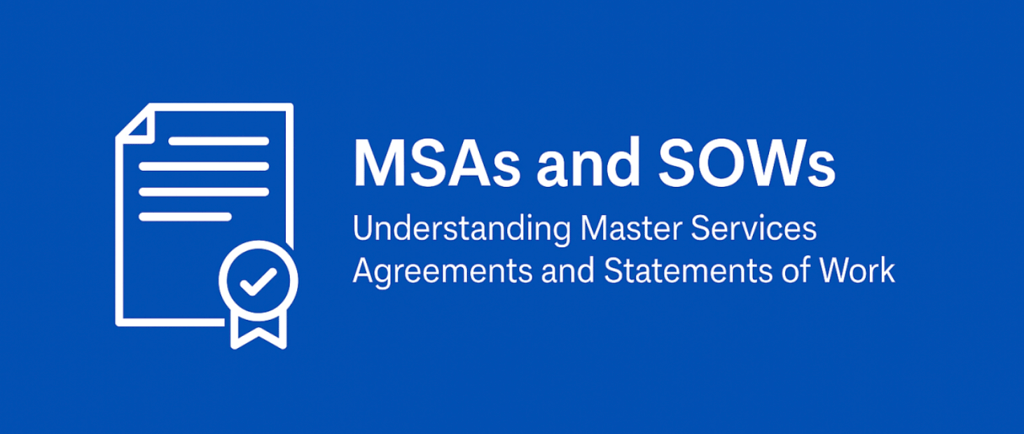Beyond the Fine Print
Why MSAs and SOWs Are the Backbone of Modern Service Relationships
10/24/20242 min read


In an era where businesses thrive on agility but rely on structure, the way we contract services has evolved. Whether you’re a tech startup outsourcing software development or a multinational partnering with logistics consultants, your legal frameworks need to be smarter, faster, and future-ready.
Enter the Master Services Agreement (MSA) and the Statement of Work (SOW)—two documents that, when properly drafted and strategically used, can transform the way companies collaborate.
Understanding the Architecture: MSA vs. SOW
Let’s clear the fog: the MSA and the SOW are not competing documents. They are complementary components of a smart contract architecture.
The MSA is the foundation—a long-term contract that governs the overall relationship. It lays out the legal and commercial terms: confidentiality, intellectual property, liabilities, dispute resolution, and termination clauses.
The SOW is the execution manual—a project-specific agreement that details what will be done, when, how, and for how much. Every new assignment gets its own SOW while the overarching relationship remains governed by the MSA.
🛠️ Think of the MSA as your building’s structural design, and each SOW as a room with its own layout, furniture, and purpose.
Why This Model Works in the Real World
1. Speed Without Sacrificing Precision
Once the MSA is in place, subsequent projects can be launched with minimal delay—just sign a new SOW. No need to renegotiate boilerplate terms every time.
2. Risk Allocation Done Right
The MSA is your opportunity to align on risk upfront—who owns the IP, who indemnifies whom, and how much either party can be held liable for. This keeps SOWs clean and focused on project execution.
3. Tailored Flexibility
Each SOW can have different deliverables, timelines, and pricing models—fixed fee, milestone-based, or time & materials—without impacting the integrity of the MSA.
4. Consistency Across Projects
When service providers work across departments or geographies, the MSA ensures uniform treatment of key terms. This reduces compliance gaps and internal friction.
Legal Clarity = Business Continuity
One of the most underrated benefits of this model is how it simplifies conflict resolution. When a dispute arises, there's no ambiguity over which terms apply. The MSA is the legal backbone, and the SOW is the operational script. Together, they provide both stability and specificity.
Common Mistakes to Avoid
Mixing project terms into the MSA: Keep the MSA evergreen and the SOW dynamic. Conflating the two creates confusion when things change.
Vague SOWs: A poorly drafted SOW is like a map without coordinates. Always define scope, timelines, and acceptance criteria clearly.
Neglecting change control: Projects evolve. Make sure both the MSA and SOW provide mechanisms for scope changes through written Change Orders.
Final Thoughts
In today’s service economy, relationships aren’t built on handshakes—they’re built on well-drafted MSAs and SOWs.
If your contracts feel like a burden instead of a strategic enabler, it’s time to rethink your approach. Aligning legal precision with operational clarity doesn’t just reduce risk—it builds trust, speeds up execution, and sets the stage for scalable collaboration.
Let’s Discuss Are you currently using an MSA/SOW structure in your business? What’s worked well—and what hasn't? Share your experiences or questions in the comments!
#contracts #legalstrategy #MSA #SOW #B2Bservices #outsourcing #riskmanagement #businesslaw #operations #contractmanagement